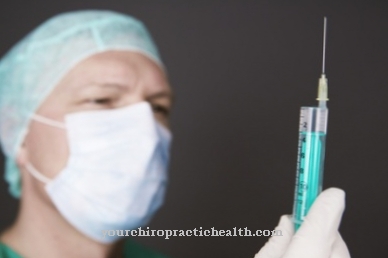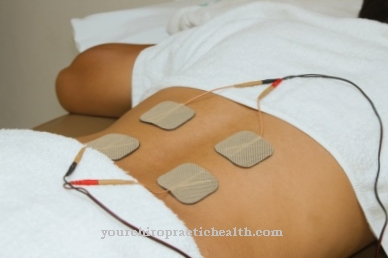The Laparoscopy or laparoscopy is a diagnostic and surgical procedure. The method is used in various medical fields and involves relatively few dangers.
What is a laparoscopy?

The Laparoscopy is also called in medicine laparoscopy designated. As part of a laparoscopy, a patient's abdominal cavity can be viewed from the inside using a laparoscope (a special endoscope).
A laparoscope usually has a camera, a light source and a lens magnification system. These tools are mounted on the end of a thin pipe. In most cases, a laparoscope used for a laparoscopy also has devices for irrigation and suction.
A laparoscopy is usually performed under general anesthesia. The patient must be sober; this means that he is not allowed to eat any food or drinks about 6-8 hours before the procedure. During the laparoscopy, the abdominal wall is pierced in order to insert the laparoscope into the abdomen after a few steps.
Function, application & goals
The Laparoscopy in medicine for various purposes. While it can be used to diagnose illnesses or injuries, for example, it is also possible to carry out so-called minimally invasive interventions as part of a laparoscopy.
For this purpose, various surgical instruments can be introduced into the abdominal cavity via the laparoscope. One of the advantages of such an operation as part of a laparoscopy is that no large abdominal incisions are required. In the diagnostic area, the laparoscopy is used, for example, to assess pathological changes in organs or tissue in the abdomen.
Corresponding organs include the stomach, liver or spleen. With the help of the laparoscopy, for example, their position, size and texture can be checked. However, the frequency of a laparoscopy for pure diagnostics is increasingly decreasing, as methods such as magnetic resonance imaging or ultrasound can now be used. One advantage of the laparoscopy as a diagnostic measure is that biopsies (tissue samples) can be taken.
For example, a common surgical procedure that is performed today with the help of a laparoscopy is the removal of the gallbladder. Occasionally this may be necessary if a patient has gallbladder infection. Today about 90 percent of all gallbladder removals are performed using a laparoscopy.
Furthermore, the removal of the appendix in the case of acute appendicitis can be carried out by a laparoscopy. Other possible surgical interventions using a laparoscopy concern the intestine or adhesions in the abdominal cavity, which must be loosened. In the field of gynecology (gynecology) too, laparoscopy is often used for minimally invasive interventions; for example, cysts (cavities filled with fluid) that have formed on the ovaries can be removed in this way.
In gynecology, the laparoscopy is also occasionally used for diagnostic purposes. Here it can provide information about the background to chronic abdominal pain.
You can find your medication here
➔ Medicines for stomach ailments and painRisks & dangers
In the Laparoscopy as a surgical measure, it is a relatively safe procedure. Corresponding body cavities only have to be opened minimally, which is why the building mirroring is also referred to as a minimally invasive procedure. However, the first piercing of the abdominal wall is performed 'blind' as part of a laparoscopy, which means that this step of the procedure cannot be visually checked.
Therefore, there is a risk that blood vessels or organs can be injured. If such an injury occurs during a laparoscopy, it is often necessary to surgically open the abdominal cavity in order to continue the procedure in this way. After the first piercing of the abdominal cavity as part of a laparoscopy, gas is first introduced into the abdomen.
Often this gas is carbon dioxide. The gas dilates the abdominal cavity so that organs and other structures are more surgically accessible during a laparoscopy. In patients who suffer from cardiovascular disorders or lung diseases, for example, it may happen that the gas introduced during the laparoscopy is not well tolerated. This can lead to temporary circulatory disorders in affected patients.













.jpg)

.jpg)
.jpg)











.jpg)